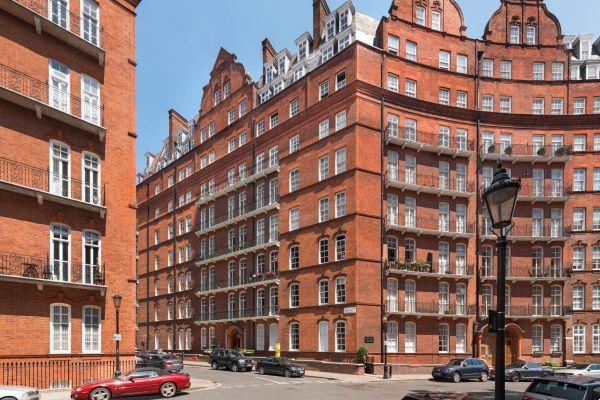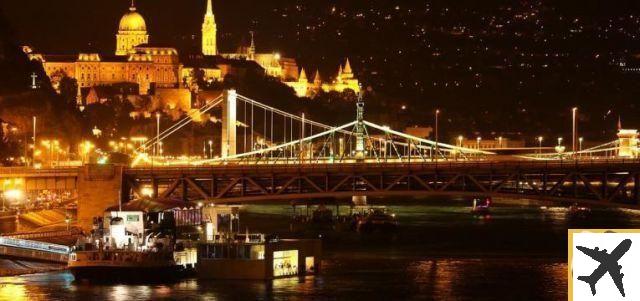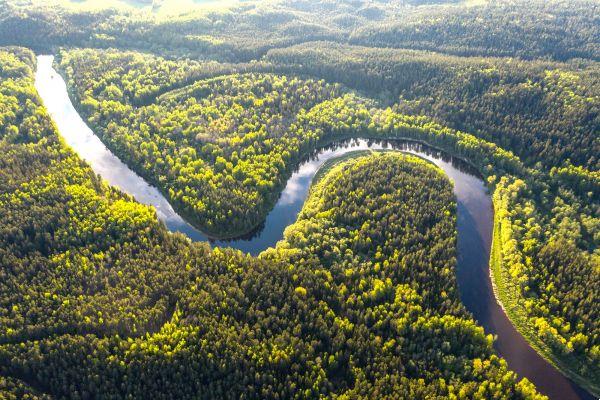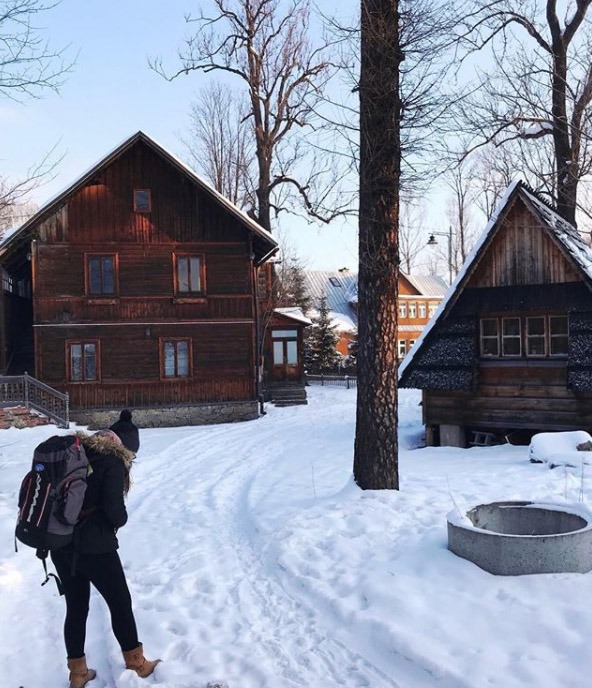As an extremely diverse continent, Europe has beautiful forests, many of which are protected in national parks. Forget the crowds, the trendy beaches and the malls. Anyone planning a trip to Europe, who loves nature and seeks to relax, can discover incredible forests and natural parks. In addition, countries like Croatia, Germany, Belgium and many others throughout the European continent usually offer an excellent infrastructure focused on ecotourism.
It is noteworthy that the vegetation of Europe varies greatly, due to the different types of soils and climates found on the continent. Currently, around 35% of the European continent is covered by forests.
In honor of Day for the Protection of Forests, which is celebrated annually on 17 July, we list in this article 5 forests that are among the most beautiful in Europe.
Are you going to travel to Europe (Schengen Area)? Your passport must be valid for at least 3 months from the return date of travel. Learn more about the rules regarding the validity of Brazilian passports on our blog!
1. Plitvice Lakes National Park, Croatia
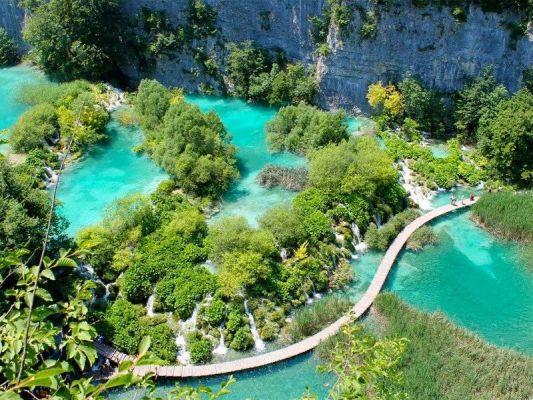
A great piece of advice we can give to anyone who wants to travel to Croatia and discover Plitvice National Park: don't forget your camera! This park boasts an almost supernatural beauty, mainly due to its cascades and waterfalls, turquoise blue lakes and leafy firs and pines scattered throughout the park. About 3/4 of this national park is covered by woods and forests, which also have several other species of trees, such as beeches, maples, oaks and alders.
Designated as a National Park in 1949, Plitvice has been classified as a World Heritage Site by UNESCO since 1979. Undoubtedly, it is one of the most beautiful places in Croatia. Many even consider it one of the most beautiful in all of Europe. Plitvice is located halfway between Zadar and the country's capital, Zagreb. The park is the second most visited destination in Croatia, after Dubrovnik.
The park's infrastructure is excellent, with 18 km of well-signposted trails. The walk is mainly done over wooden walkways, which facilitate the access of tourists. There are itineraries for all types of visitors, including the elderly and children. There is also parking, luggage storage and restaurants right at the entrance, as well as some hotels in the vicinity.
2. Halles Forest (Hallerbos), Flemish Brabant, Belgium

When traveling to Belgium, be sure to visit Hallerbos, which seems to have come out of a fairy tale. Also known as “The Blue Forest”, Hallerbos is indeed an enchanting forest. Located in the municipality of Halle, this forest is a super accessible place, and is very close to the capital of the country, Brussels.
In spring, the region is completely covered with a carpet of hyacinth flowers (bluebells). The phenomenon is not uncommon in the beautiful forests of Europe. However, Hallerbos stands out due to the density and peculiar beauty of its flowers.
In addition, visitors can walk peacefully along the winding forest paths and find adorable animals along the way, such as rabbits and deer.
As hyacinth bloom season approaches, the official website of the Hallerbos Forest posts daily updates on the phenomenon. In this way, photographers and visitors will know the best time to visit and witness this magical blue spectacle.
3. Saxon Switzerland National Park, Alemanha

This park is located near Dresden, capital of the state of Saxony, Germany. About 40% of the park is completely covered by forests, many of them untouched by man. The landscape of the place is marked by endless valleys and waterfalls, as well as rocky cliffs and sublime mountains. The local trails pass through cedar, pine and spruce forests.
An interesting point is that some points of the Saxon Switzerland National Park appear in the movie “The Grand Budapest Hotel” (2014). One of these points is the famous Bastei bridge, which passes majestically over the River Elbe, right in the middle of the forest. The bridge is one of the main landmarks in the region, as well as being a tourist attraction for over two hundred years.
The incredible picturesque landscapes of Saxon Switzerland extend into the territory of the neighboring country, the Czech Republic, where the Bohemian Switzerland national park is located.
4. Peneda-Gerês National Park, Portugal

The Peneda-Gerês National Park, also popularly called “Gerês”, is the only national park in Portugal. In fact, the park, which was created in 1971, is one of the largest protected areas in the country. The objective was to protect the region's soil, water, flora and fauna, as well as to preserve and value these natural resources.
Located in the north of Portugal (near the border with Spain), this region has stunning landscapes and a vast forested territory. The park is located in the border area between Minho, Trás-os-Montes and Galicia, thus covering Serra da Peneda and Serra do Gerês. In addition, being very close to Braga, the park is often considered one of the city's tourist attractions.
Without a doubt, the Peneda-Gerês National Park is a true paradise, especially for ecotourism lovers. The trails are perfectly signposted, and pass through long valleys, forests and beautiful mountains. In addition, when following the trails through the forests – on foot or by bicycle – you will be able to observe the ruins of ancient buildings, such as castles, monasteries and sanctuaries, which blend perfectly with the landscape.
5. Crooked Forest, Poland

The Crooked Forest, or Crooked Forest, is located near the village of Nowe Czarnowo, near the border with Germany, in Poland. Without a doubt, this beautiful forest could not be out of our list. The trees in this forest, about 400 pines, were planted around 1930, when the area was still German territory.
Although many theories try to explain the strange shape of the trees in this forest, the real reason is still unknown. In general, it is believed that the trees were this way because of the technique used to plant them. Another theory says that the trees bent because of the war tanks, which passed through the place during the Second World War, forcing the trees to grow in an unconventional way. The scariest theory even says that the place is haunted, and the trees turned out to be crooked by occult powers. Even if you are one of those people who love a dark place, a visit to the forest at night is highly recommended.
However, whatever the reason for its uniqueness, the Crooked Forest certainly remains one of the strangest and at the same time interesting places in Poland. Undoubtedly, this forest is an incredible place for a beautiful relaxing walk in the midst of nature.
Tips to make the most of your experience in the beautiful forests of Europe:
- Always wear breathable clothing and comfortable shoes, preferably with non-slip soles;
- Be sure to have a coat, as the climate tends to be colder in forests;
- Never venture into unknown and unmarked trails without guidance;
- Don't forget to use sunscreen, especially in summer;
- Be sure to bring your cell phone, as well as a flashlight;
- If necessary, request a map of the region at tourist service points;
- Carry food and drinking water in a backpack;
- Always leave your hands free and avoid carrying things in bags;
- The most important: never throw trash on the floor! Always take your waste with you until you find the nearest dumpster.
By using appropriate clothing and accessories, you can avoid, for example, possible discomfort during your sightseeing tour. Following good planning, especially in this type of program, can greatly influence your experience. And remember: disposition and good humor are, above all, fundamental pieces.












